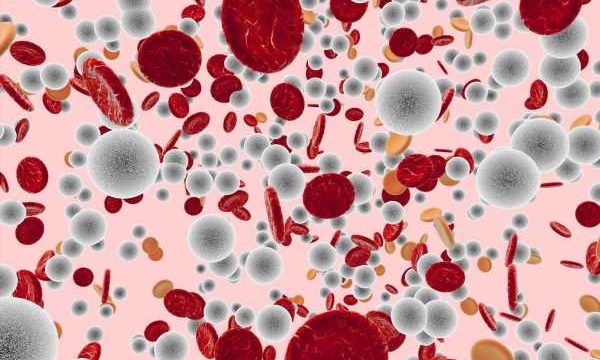In a recent study published in the Journal of Thrombosis and Haemostasis, researchers investigated the role of platelets in the adverse immune response against a coronavirus disease 2019 (COVID-19) vaccine.
 Study: Platelet size as a mirror for the immune response after SARS-CoV-2 vaccination. Image Credit: Angel Soler Gollonet/Shutterstock
Study: Platelet size as a mirror for the immune response after SARS-CoV-2 vaccination. Image Credit: Angel Soler Gollonet/Shutterstock
Platelets are known to adopt several immune functions. They interact directly with viruses and bacteria, crosstalk with other immune cells, and participate in inflammatory processes. Additionally, they play a key role in adverse immune responses to vaccination, such as vaccine-induced immune thrombotic thrombocytopenia (VITT).
VITT is a rare condition observed within 4–30 days of vaccination among recipients of adenoviral vector-based COVID-19 vaccines. In VITT, immunoglobulin G (IgG) class platelet-activating antibodies form immune complexes with chemokine platelet factor 4, recognized by platelet Fc gamma IIa receptors. This immune complex formation eventually leads to the activation of platelets and procoagulant platelet formation. Although it is rare, VITT demonstrates that platelets most likely contribute to the immunization process following vaccination.
In response to vaccination, including against COVID-19 vaccines, platelets set out an inflammatory response in a sequential manner, wherein vaccination induces cytokine release that alters platelet generation and subsequently brings about changes in its size and function. A normal platelet-turnover, characterized by an equilibrium between platelet generation and removal, but inversely related to platelet size and platelet counts in blood circulation, is tightly regulated by thrombopoietin levels. Therefore, among healthy subjects who receive COVID-19 vaccination, a decreased platelet size is often observed.
Study findings
In the present study, researchers studied an intriguing aspect of platelet function. They investigated how platelets function as effector cells to mount an immune response against severe acute respiratory syndrome coronavirus 2 (SARS-CoV-2) vaccination. The researchers screened healthy recipients of two doses of the mRNA-based SARS-CoV-2 vaccine BNT162b2 to examine the cytokine response and signs of an elevated platelet turnover after vaccination.
As expected, vaccinated individuals exhibited a rapid cytokine response and had increased levels of several interleukins, interferons, and tumor necrosis factor-α. The mean platelet volume (MPV), platelet distribution width, and platelet large cell ratio showed a gradual increase after the first vaccine dose, in correlation with the antibody response against the SARS-CoV-2 spike (S) protein; although the platelet count only slightly altered.
There is scientific evidence that the increase in platelet size is associated with increased levels of the integrins αIIb and Ibα, the inhibitory receptor platelet endothelial cell adhesion molecule-1 (PECAM-1), and glycoprotein (GP) VI, all of which are phenotypical changes. Interestingly, larger platelets under steady-state platelet turnover are more responsive to such platelet antagonists. Consequently, the authors noted that after the second vaccine dose, at day 21, the MPV and platelet receptor levels had decreased compared with earlier time points; moreover, platelet response to convulxin (an agonist of GPVI) was substantially stronger. These findings suggested that increased immune responsiveness is adopted by smaller platelets in the long run when platelet turnover temporarily increases following vaccination.
Another significant observation was that individuals who displayed a rapid immune response after vaccination with regard to anti-S antibody generation also showed a rapid cytokine response after vaccination, accompanied by an early increase of the MPV. On the other hand, slow responders showed a delayed cytokine response and accompanying increase in platelet size.
Previous studies with mice have demonstrated that interleukin-1α (IL-1α)-mediated platelet release leads to the production of large-size platelets, larger than thrombopoietin-stimulated megakaryocytes. In the current study, the authors also noted a strong positive correlation between raised MPV and IL-1β levels after the COVID-19 vaccination. It is worth noting that in the absence of elevated thrombopoietin during systemic inflammation, cytokines, such as I L-1α, promote platelet release by the rupture of megakaryocytes, accompanied by an increased platelet size.
Conclusions
To summarize, platelet size indices, such as the MPV, platelet large cell ratio, and platelet distribution width, may not substitute for platelet function when platelet turnover occurs. However, as they are easy to measure by routine cell counters, they may still help evaluate COVID-19 vaccination-induced immune responses.
The study observations highlighted that COVID-19 vaccination results in a physiological inflammatory response involving platelets to help provide insights into the role of platelets as effector cells in rare adverse vaccination reactions and help distinguish between physiological and pathological immune responses after vaccination. More importantly, the ongoing worldwide COVID-19 vaccination campaign may provide a remarkable opportunity to study the immune functions of platelets.
-
Thiele, T., Schwarz, S. and Handtke, S. (2022) "Platelet size as a mirror for the immune response after SARS‐CoV‐2 vaccination", Journal of Thrombosis and Haemostasis. doi: 10.1111/jth.15659. https://onlinelibrary.wiley.com/doi/10.1111/jth.15659
Posted in: Medical Science News | Medical Research News | Disease/Infection News
Tags: Antibodies, Antibody, Bacteria, Blood, Cell, Cell Adhesion, Chemokine, Coronavirus, Coronavirus Disease COVID-19, covid-19, Cytokine, Cytokines, Endothelial cell, Glycoprotein, Immune Response, Immunization, Immunoglobulin, Inflammation, Interferons, Interleukin, Molecule, Necrosis, Platelet, Platelets, Protein, Receptor, Respiratory, SARS, SARS-CoV-2, Severe Acute Respiratory, Severe Acute Respiratory Syndrome, Syndrome, Thrombocytopenia, Thrombosis, Tumor, Tumor Necrosis Factor, Vaccine

Written by
Neha Mathur
Neha Mathur has a Master’s degree in Biotechnology and extensive experience in digital marketing. She is passionate about reading and music. When she is not working, Neha likes to cook and travel.
Source: Read Full Article
